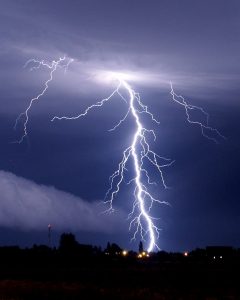We are entering the height of hurricane season in Southwest Florida, and all eyes are on the big storms. Activity in the Atlantic has local residents bracing for catastrophic property damage, flooding, and power outages. However, residents should not overlook more commonplace threats while prepping for “the big one.” The near-daily thunderstorms that define fall in Florida make it one of the most dangerous times of the year for motorists. 
Sudden storms are the norm in our state, often causing blinding rains, reduced traction, and flooding that can challenge even veteran drivers. Due to these hazards, we encourage you to service your vehicle and check your tires for adequate tread. Florida’s mild winters eliminate the early spring and late fall maintenance schedules followed by motorists in much of the rest of the country, and it is easy to be caught off guard by rapidly changing road conditions. In addition, intense summer temperatures and blistering asphalt can quickly degrade tires when tread and traction are most needed. Ensuring your car is ready for inclement weather is the best way to combat difficult road conditions due to Florida storms.
Weathering the Storm: Safe Driving in SWFL
While the winter months are most challenging for northern motorists, drivers in South Florida must cope with severe storm conditions from June until November, with some outliers striking in the off-season.
Our car accident lawyers in Lee, Collier, and Charlotte counties urge you to respect the risks. Talk to the young drivers in your family, educate out-of-state visitors, and remember the following key safety tips:
- Watch the forecast: While torrential rains are most common during late afternoon, keeping an eye on the forecast can help arm you with the knowledge to stay safe on the road around the clock. Avoid traveling in bad weather whenever possible. Unless they are part of a larger tropical system, summer storms rarely last longer than half an hour.
- Watch the horizon: Our proximity to the coast makes forecasting a challenge. Watch for incoming weather. A curtain of rain on the horizon or dark, low-lying clouds are warning signs that a storm is quickly approaching. Don’t hesitate to pull over and wait it out. Rain can quickly increase in intensity, reducing visibility to near zero in a matter of seconds.
- Stay to the right and pull over: Whenever possible, ride in an outside lane and be prepared to pull over if weather intensifies quickly. This type of maneuver can be more difficult or even dangerous to perform from an inside lane. Stopping under an overpass can offer the most safety, and will make you most visible to approaching motorists as the overhead roadway temporarily blocks some of the rain.
- Use headlights and hazard lights: Always use your headlights in bad weather. Before last year, using hazard lights in poor weather was actually a violation of traffic laws in Florida. Fortunately, lawmakers have now legalized using hazards on roads with speed limits over 55 mph in “extremely low visibility” conditions. Using your hazard lights can help make you more visible and reduce your chances of being rear-ended during inclement weather.
- Avoid standing water: Never drive into standing water—even if it appears shallow. Floodwaters are common for an hour or so after a heavy storm, as the drainage system deals with the deluge. Wait to travel whenever possible. If you encounter standing water, turn around and take an alternative route.
Soon enough, we will be enjoying a long winter of sunny Southwest Florida skies. For the next two months, the height of storm season deserves your respect and attention when on the road.
If you or a loved one is injured, call Associates and Bruce L. Scheiner, Attorneys for the Injured, at 1-800-646-1210.
 Florida Injury Lawyer Blog
Florida Injury Lawyer Blog





